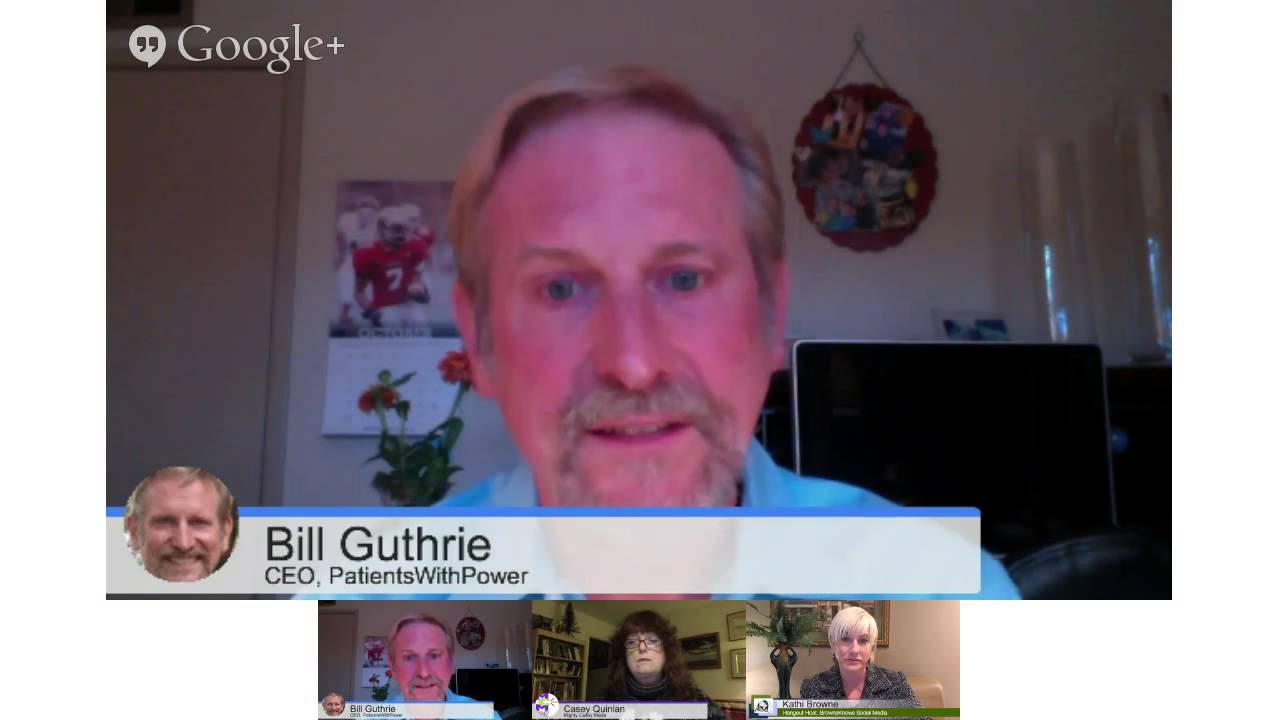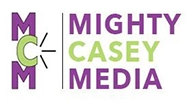I wasn’t lucky enough to get a press pass, or a scholarship, to HIMSS15 this year. Given events of the last few days, I’m really sorry I can’t be on the ground in Chicago for what feels like a grassroots revolt brewing in protest of the Centers for Medicare and Medicaid Services (CMS) dropping an announcement, on Friday late afternoon, that they were thinking of gutting the rules for patient access to their own records under the “Meaningful Use” criteria of healthcare reform. You know, the one where we spent something like $6B of taxpayer money. Which was supposed to make care easier, safer, cheaper. There are phases and stages of Meaningful Use. We’re in MU2 right now. Originally, by the end of the MU2 period (running through 2020), a practice or facility had to demonstrate that 5% of the people/patients cared for in that practice or facility viewed, downloaded, or transmitted their personal health information (PHI) to a 3rd party. That was the criteria for a healthcare provider seeking stimulus $$ for EHR technology deployment [updating: and Medicare reimbursement]. Here’s the “new” rule (clue train: instead of 5%, it’s 1. No, not 1%, one patient) being proposed: I know, right? Friday afternoon, everyone in the industry is heading to Chicago for HIMSS15, who’ll care? Sorry, CMS, but you are totally busted. Here’s data access rights activist Regina Holliday, who’s at HIMSS and whose hair is now on fire. Speaking of “hair on fire” … so’s mine. Seems like the Empire is trying to strike back. Or the Capitol (the big-money healthcare industry players who drop money on K Street lobbyists like snowflakes in Boston in the winter of 2014) thinks it’s run over all the Districts (patients, caregivers, families) and has little to fear from our powerlessness. I think they’re wrong. Dead…
I’ve spent a good portion of the last two months on the healthcare equivalent of the political stump – called the “rubber chicken circuit” in political circles. Thankfully, there was no actual rubber chicken served during these sojourns, although there was the incident of the seductive breakfast sausage, followed by my solo re-enactment (off stage) of the bridal salon scenes from the movie “Bridesmaids.” I will draw the veil of charity (and gratitude for travel expense coverage) over the details of that incident, and just advise all of you to stick to fruit, cereal, or bagels at conference breakfasts. ‘Nuff said. My original editorial calendar plan was to turn this into a series of posts, broken down by focus into technology and clinical categories. However, since a big part of my goal in standing on the barricades at the gates of the healthcare castle, waving my digital pikestaff in service of system transformation, is breaking down silos … well, go grab a sandwich, and a beverage. This is gon’ be a long one. HIMSS Patient Engagement Summit In early February, I headed to Orlando for the first Health Information and Management Systems Society (HIMSS) Patient Engagement Summit. I was asked to participate in two panel discussions, one titled “Patient Perspectives: The State of Engagement,” the other “Can We Talk? The Evolving Physician-Patient Relationship.” Both were moderated by Dr. Patricia Salber, the bright mind behind The Doctor Weighs In. Being a person with no letters after her name (like Elizabeth Holmes [update: she’s trash, so redacted] and Steve Jobs, I’m a college dropout), I’m used to showing up at healthcare industry events and being seen as something of a unicorn fairy princess. That’s how people commonly called “patients” are usually viewed in industry settings outside the actual point of care. Healthcare professionals/executives are so used to seeing us as revenue units,…
You’ve heard me before on the subject of shared decision making (SDM). Short version: I’m an advocate for partnership in medical care. Partnership that includes the values, outcome goals, and cost considerations of THE. PATIENT. Which means shared decision making. My buddies over at Software Advice have just published the results of a survey* they did in collaboration with the Mayo Clinic’s Knowledge and Evaluation Research (KER) Unit that took a deep dive into what’s happening in the real world with SDM, and what patients who are exposed to the process think of it. The key findings: A majority of patients (68 percent) say they would prefer to make collaborative decisions about treatment options with their healthcare provider. Forty percent of patients say they have participated in SDM before, and 21 percent have done so within the past year. Most patients surveyed say that SDM improves their satisfaction (89 percent) and makes them feel more involved in the care they receive (87 percent). Nearly half (41 percent) of patients report that they would be “much more likely” to adhere to a treatment plan developed using SDM. 47 percent of patients would be “extremely” or “very likely” to switch to a provider whose practice offers SDM. If you click through to the full article in the 2nd graf, you’ll see a number of graphs and charts reporting on patients’ responses to questions about provider choice and treatment protocol adherence – one of my least favorite words, but it’s a favorite of pharma and healthcare system peeps, so there it is. The pie chart that stood out for me was this one: Likelihood to Switch to SDM Provider For the math-challenged, 80% of the patients surveyed were moderately, very, or extremely likely to switch to a healthcare provider who practices SDM. Physicians and other clinicians who interact…
My last two posts explored the question of the doctor/patient relationship in the context of romantic relationships. The first one asked if we were anywhere close to getting engaged, the second looked at the possibility that the whole enchilada needed some intervention-level relationship counseling. In the couple of weeks since, I’ve had some interesting digital and face to face conversations about digital communication tools, patient engagement, and the doctor/patient relationship that have led me to ask if the crop of EHR (Electronic Health Record) systems in current use across the land, as part of Obamacare’s drive toward healthcare system quality, safety, and access (or, as I like to put it, to the tune of “Old McDonald Had a Farm,” EHR, HIE, E-I-E-I-O!), aren’t analogous to online dating sites like Match.com. Which leads me to the observation that the EHR tech I see – all of it, from Epic to Practice Fusion to athenahealth to NextGen to Cerner – can in many ways be compared to Match.com. You put in personal data – name, personal details, outcome goals – and the technology (supposedly) helps you toward your goal. With EHR, that’s best-health, with Match.com, it’s a romantic relationship, but both take data input, digitize it, and claim to provide solutions based on that input. And I have to say that my observed success ratio on both EHR technology and online dating is similar. As in: mostly it feels like “failure to launch.” So … go grab a cup of coffee, or a bottle of water. This will be a lengthy look at that question, but I promise to bring it home with at least a couple of laughs along with my pointed observations. The leading lights of healthcare IT haven’t made the doctor-patient relationship any easier to create and maintain than Match.com has for romatic relationships. For every success story, there are hundreds (thousands? millions?) of…
This is a guest post by TechnologyAdvice.com writer Jesse Jacobsen. TechnologyAdvice.com is based in Nashville, TN, and their stated mission is to provide valuable insight to business technology buyers, while creating connections with the products and vendors that best meet those buyers’ needs. Their site is a goldmine of industry-specific intel on current software and IT products and trends … and they have a dedicated healthcare tech content channel! According to the 2013 HIMSS Analytics Report, 73 percent of respondents indicated they were participating in health information exchange (HIE), with 57 percent only participating in a single HIE. Of the practices in an HIE, 52 percent reported experiencing benefits with better access to patient information, 20 percent experience promoted patient safety, and 12 percent said HIE led to time savings among clinicians. Only 16 percent reported no benefits. As evidenced above, HIEs can be effective tools for improved practice operations, but that doesn’t mean the system is foolproof. In the same report from HIMSS, the top challenges faced by hospitals included other organizations not sharing enough data (49 percent), lack of necessary staff (44 percent) and resources (40 percent), and privacy concerns (39 percent). As government mandates continue to push provider use of electronic medical records (EMRs) and HIEs, more practices are beginning to consider if it’s time to participate in a health information exchange. The following will look at some of the current benefits from HIE participation and address some current challenges. Benefits Better Patient Information HIEs provide physicians with easier access to patient information, especially on a state level, such as the recently implemented HIE in Florida. Currently, accessing patient information can be a costly and inefficient process, with too much reliance on faxing and email. Utilizing an information exchange makes gaining patient data a quick process with far fewer expenses….
It’s bad enough when your GM SUV turns into a rolling fire hazard. Imagine needing, and getting, a hysterectomy, only to discover that the surgical procedure itself turned you into an advanced stage cancer patient? That’s exactly what’s been going on since power morcellators became common in laparoscopic uterine surgery to remove fibroids. In morcellation, the fibroid tissue, and/or the entire uterus, is ground up prior to being sucked out of the abdominal cavity. I’m sure that you, and I, can do the biological math on this question, “What if that fibroid is cancerous?” Yep, that would mean that previously encapsulated cancer cells would be set free to run rampant through the aircraft – the patient’s body – spreading its metastatic self far and wide. Why didn’t anyone at the FDA do that bio-math? Turns out that when these devices were approved in the late ’90s, since other similar devices were already on the market, no clinical trials were ever done. Here’s a graf from the NY Times back in April, talking about this very thing: “Morcellators were allowed onto the market in the 1990s without the usual clinical trials in patients because they were similar to other devices that had already been approved — a process that critics of the agency say can lead to safety problems like the one that has now been recognized.” tweet I’ve known about morcellators for only about 10 months – which is surprising, considering my interest in medical quality and patient safety – but my eyes were opened by my buddy Gilles Frydman, the man who started the Association of Cancer Online Resources (ACOR), which gets credit for helping some friends of mine, including ePatient Dave himself, save their own lives by giving them the information they needed to fully participate in their own care. Gilles is also behind SmartPatients.com, but I…
Unless you’ve been living under a rock since October 1, you’ve heard that Healthcare.gov, the site where Americans can shop for health insurance, had a rocky start in life. OK, it was an epic mess. I was one of the people who was eager to jump on the site on October 1, since I haven’t had health insurance since I completed cancer treatment in 2008. That cancer diagnosis and treatment put me in the pre-existing condition pile, which put renewal insurance premiums for my individual coverage at an eye-popping level. You can read the details on that here. On October 1, I hopped on my Mac, and surfed over to Healthcare.gov … and had the same experience everyone else seemed to be having: That continued over the following seven days, with me developing a nice little flat spot on my forehead from head/desk-ing my way through many attempts per day at getting past the first step of creating a profile on the site. Even when I had completed that process of creating a profile, every time the site announced “Success! Click here to continue.” I clicked “there” and … got a blank page. On October 8, I realized that I, and the site’s developers, might have missed something. I was using Google Chrome, my default browser, and the dominant browser across the web. Could it be that the dim bulbs that built the Frankenstein that is the Healthcare.gov site optimized the site only for native browsers? I opened Safari, and discovered that yes, they were indeed that dim, because even though the site loaded at the speed of a slug on Quaaludes, it did load. And “Success!” allowed me to continue the enrollment process. No blank pages. I re-enacted scenes from 1995, when I would log on to Netscape to download email…

I had the chance to participate in a Hangout on Air with Kathi Browne, who is the founder/moderator of the Google+ Healthcare Talk community. If you’re on G+ and in the healthcare industry, that community is one you want to join – lots of discussion on topics from healthcare policy to social media to patient safety to care quality. It’s invitation-only – if you’d like to join, hit the G+ link above and ask Kathi to add you to the community. Last night’s (Monday, Oct. 28, 2013) Hangout on Air was a conversation with Bill Guthrie, CEO of Patients with Power, a new web-based platform for shared decision-making for cancer patients and their oncology teams that’s in beta at UCSF’s lung cancer oncology unit and also as a survival-planning tool at Cornell-Weill/New York Presbyterian’s ob-gyn onco unit. Decision-making for cancer patients – shared, or not – is a firehose. Patients with Power does what its name promises, it gives patients access to the information they need to make an informed decision, information that’s solidly based in evidence-based medicine since it’s based wholly on National Comprehensive Cancer Network (NCCN) guidelines for cancer treatment. Bill has given me a demo of the tool, and it’s superb. He also did a walk-though last night. Give a watch/listen: //www.youtube.com/embed/FPTIjDwirDI
Welcome to the MightyCasey–hosted edition of the HealthWorksCollective #HCSM Review, a peer-reviewed compendium of timely, on-topic writing about healthcare from across the web. Last Friday, I put out a call for posts about healthcare costs and/or health insurance innovation for the HCSM community. Here’s the brain candy that flew over the MightyCaseyMedia transom: First up: an examination of STD occurrence alongside STD testing costs in the New York metro area from ClearHealthCosts.com (@chcosts), written by Sherry Mazzocchi. This is a deep dive into the incidence of STDs across New York City, with snapshots of what consumers actually pay for STD testing at a number of facilities across the region. Runs from $0 (for members of a subscription medical practice) to $600 for women who visit a Westchester County practice. Like Uwe Reinhardt has said for years, healthcare pricing is chaos behind a veil of secrecy. For patients looking to pierce that veil and direct-pay for their care, ClearHealthCosts’ founder Jeanne Pinder offers up this post – New ways of paying: Cutting out the middleman. Seems like everybody’s looking for a better way to hold down health costs. In a number of cases, that means patient and provider are getting together directly, without the middleman (the insurance company). You could start asking, “How much is that?” and acting on the answer. With Oct. 1 and the dawn of the ACA’s new health insurance marketplaces, Jeanne Pinder shares What it means to you: Oct. 1 and buying health insurance. Maybe you avoid the topic of health insurance, but you can’t any longer. If you’re not covered by employer insurance, Medicare or Medicaid, you will need to know things about buying insurance (or choosing not to buy it). Her post offers some actionable advice on how to figure out what the marketplace means to you. From one of my…

It was recently revealed that an Excel error contributed to the European fiscal crisis, and a continuing global economic recession/depression. Paul Krugman called the revelation the Excel Depression in the NY Times. Certainly lives are at stake when the success or failure of large economies are at risk, but not nearly as many lives as are at stake every day given the lack of transparency (and even, in some cases, plain truth) in bioscience research and medical outcomes reporting. Ben Goldacre gave a barn-burning TED talk, “Battling Bad Science,” in 2011. He gave another one in 2012 in which he called the data manipulation in scientific research the “cancer at the core of evidence-based medicine.” His point? We cannot make a meaningful decision in the absence of ALL the data. Tim Berners-Lee, the man who invented the actually-useful-to-humans WWW part of the Internet, has consistently called for raw data – ALL the raw data – NOW. Paul Levy, the former CEO of Beth Israel Deaconess Hospital, recently blogged about the failure of the Journal of Pediatric Surgery to reveal, in a report on a surgery for sunken-chest deformity, a widely-reported death of a teenage boy after said surgery, even though that boy’s case is used as an example of avoidable medical error in safety bootcamps for medical interns and residents. Boggles the mind, doesn’t it? Even if the data is fully reported, the PR geeks who write up the announcement of results might get that report 100% wrong. Witness the recent contretemps over a University of Chicago study on patient engagement, shared decision-making, and healthcare cost control. A full outline of that mess, by ePatient Dave deBronkart in Forbes, will give you 411 on that story. The Cliff’s Notes: it was a post-discharge survey, not a full study; it measured attitudes, not outcomes; and the press release was sent out on…



